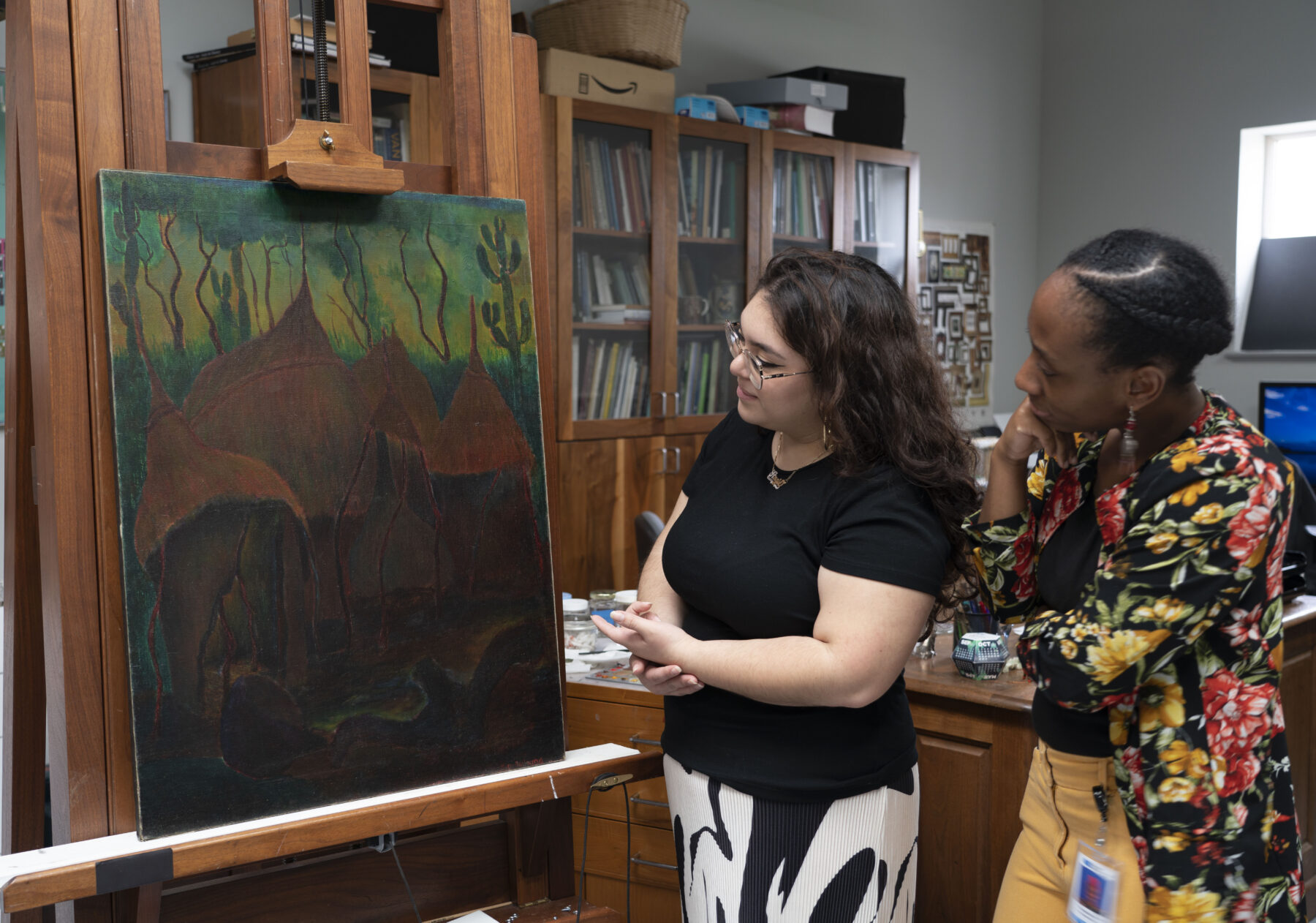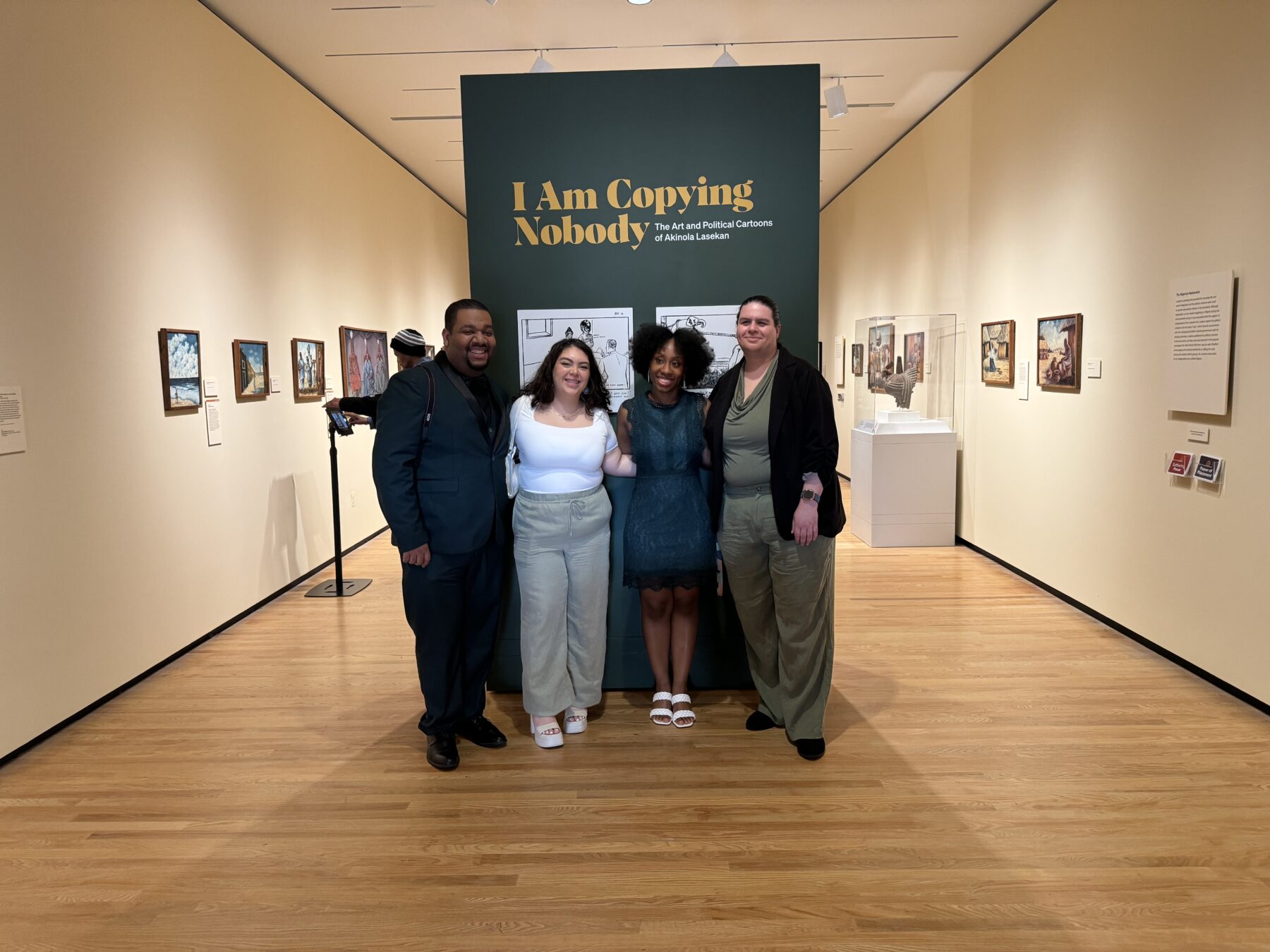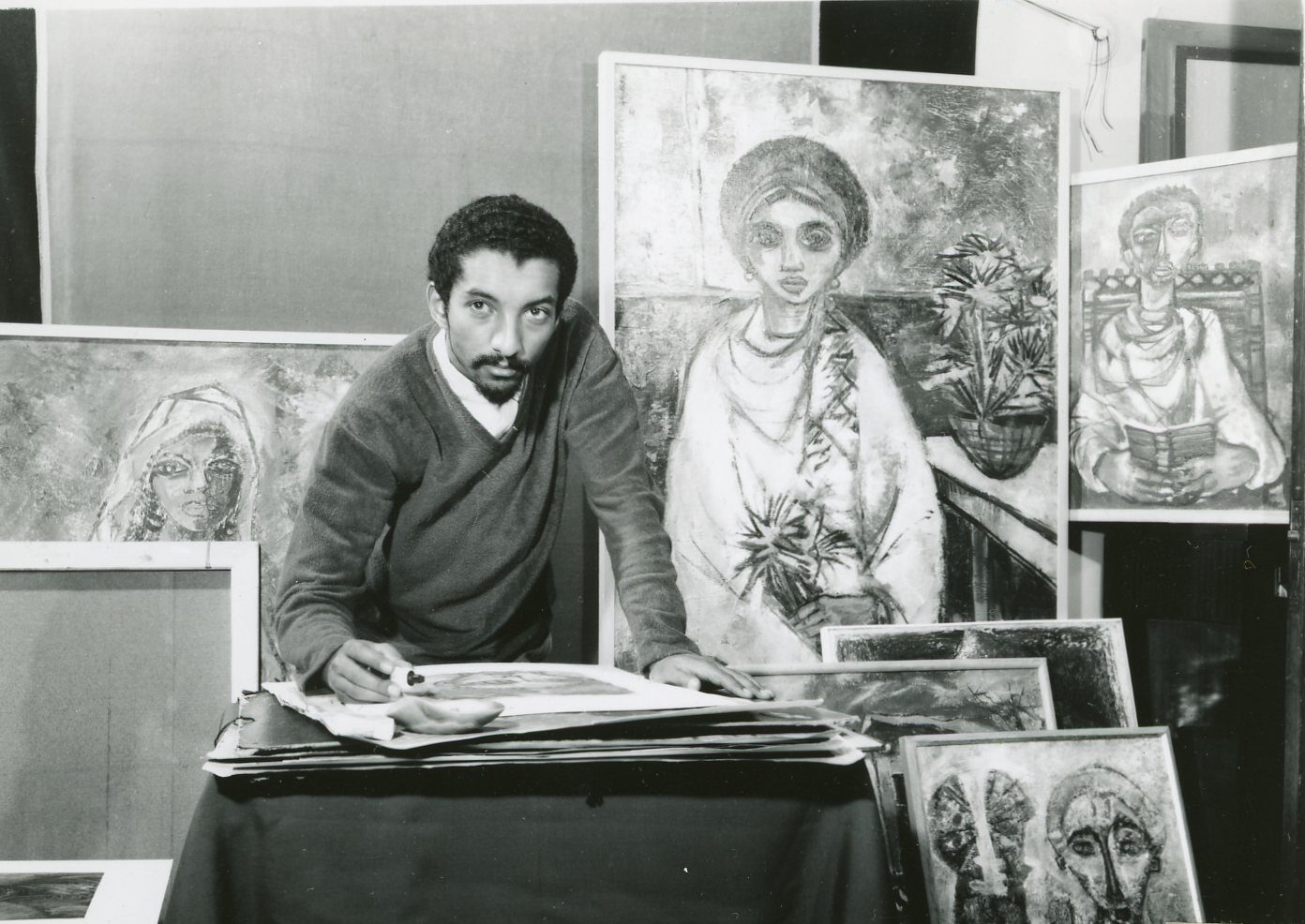The Andrew W. Mellon Fellowship: Now and Beyond

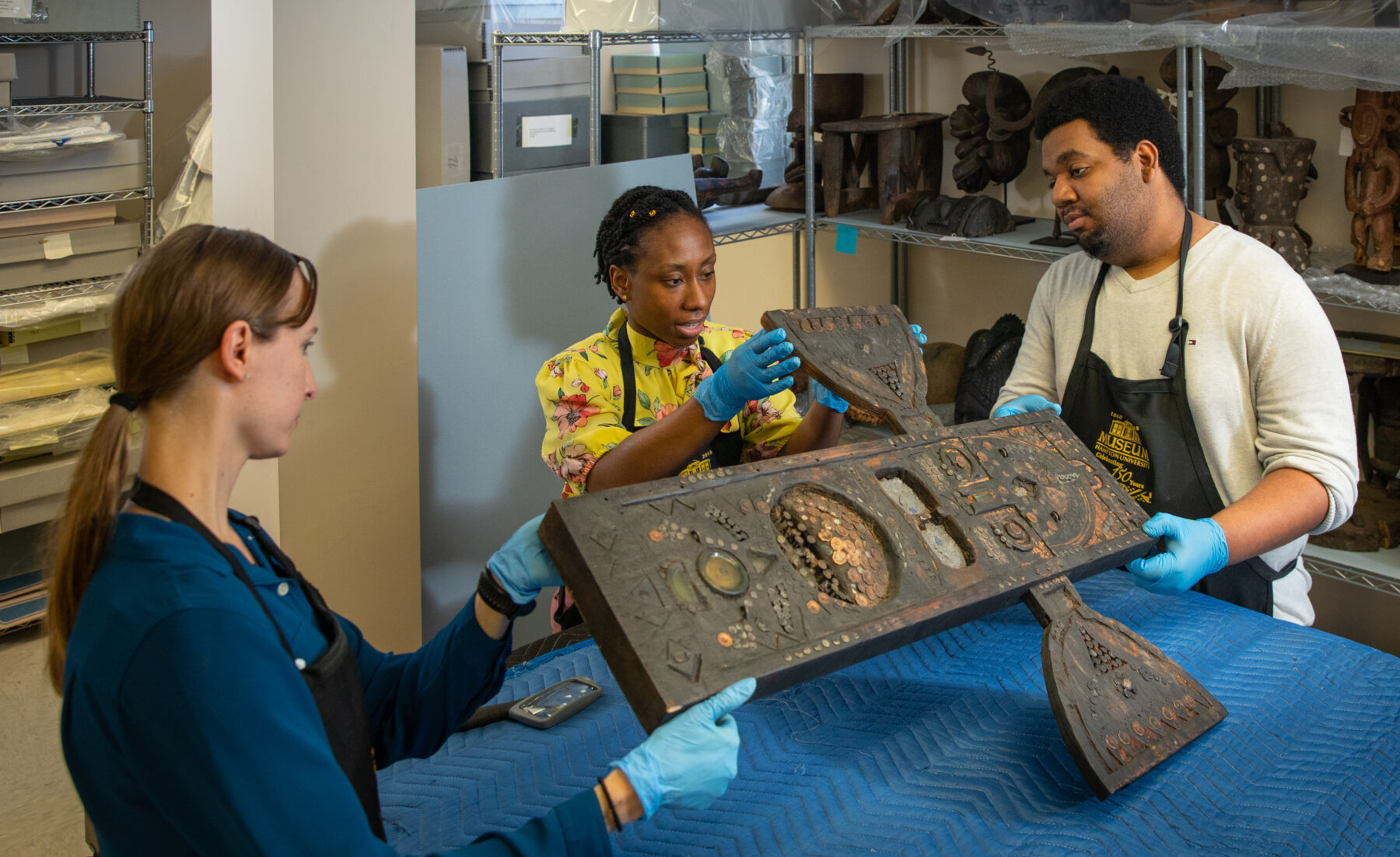
When I stepped into this position as the Andrew W. Mellon curatorial fellow, a three-year fellowship felt like a long time. As the fellowship comes to an end, I am shocked at just how fast three years have gone by. Thinking back on my time in this position, I cannot help but reflect on what our team has been able to accomplish. Despite challenges and setbacks, the Mellon team – what we have come to call ourselves – persevered in every sense of the word. In this essay, I will highlight some of our accomplishments and address two main takeaways that can help those looking to reproduce a similar fellowship program.
Accomplishments
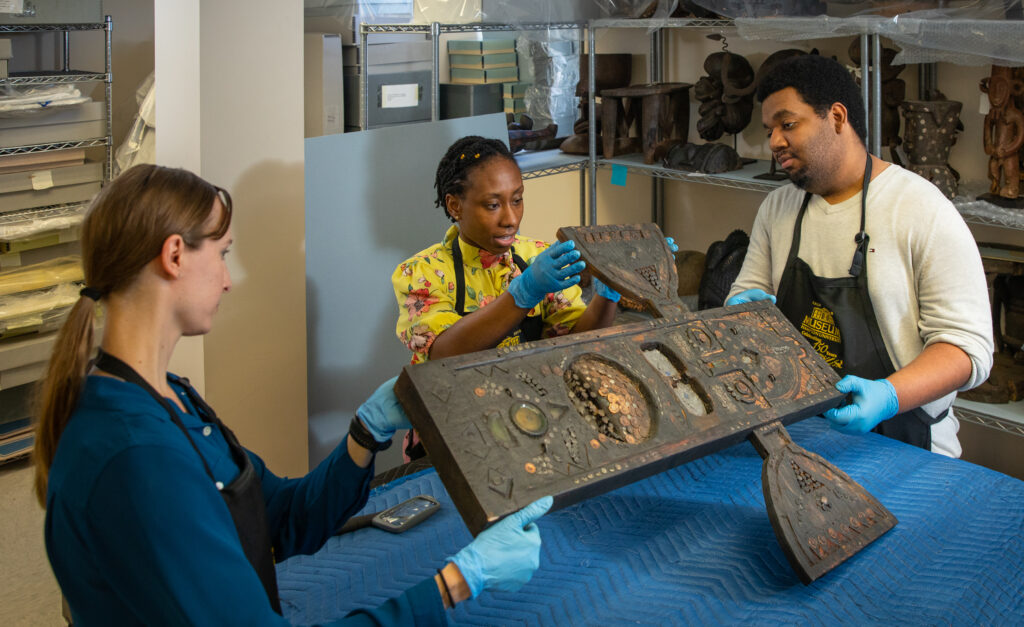
The first year of the fellowship, which started in October of 2021, was primarily spent at Hampton University Museum (HUM). Most of the year was preoccupied with completing a survey of HUM’s Harmon Foundation Modern African Art collection. Completely a survey of the modern African art collection, which was donated by the Harmon Foundation in 1967, was a vital part of the project when considering how much was previously unknown about this collection. Some of the questions the survey hoped to answer were “How many artworks are in the collection and who are the artists represented in the collection.” It is worth mentioning that the modern African artworks donated by the Harmon Foundation are part of a larger collection that includes artworks from African American, Japanese, and other artists.
Early on, Elizabeth Robson, the former Andrew W. Mellon Conservation Fellow, and I recognized the importance of our work. The completion of this survey would broaden the knowledge of this collection and add these artworks, most of which have not been seen in person in almost sixty years, to the discourse of modern African art. Sharing this survey would allow scholars and other institutions to further study these works and even borrow these works for future exhibitions, further expanding the reach of this collection.
Having the opportunity to view artworks by Akinola Lasekan, René Bokoko, Afi Ekong, Miranda Burney-Nicol, Amon Koti, and countless others served as a reminder as to why it is important to survey and study non-Western artworks. These artworks not only give further insight into the artists but also present valuable information concerning the period they were created. For example, the paintings by Congolese artist Pilipili Mulongoy reflect his chosen artistic style which often featured fauna and flora in front of a pointillist-inspired background. Mulongoy’s distinct style also connects to the teachings of Pierre Roman-Desfossés who created the artist workshop, Le Hangar, in 1946 in what is now Lubumbashi, Democratic Republic of the Congo. Roman-Desfossés rejected Western art education and through his teachings promoted the idea that colonization was corrupting the “pure” African artist. To bring out his student’s “natural” abilities, Roman-Desfossés encouraged them to “translate only those things which he conceived and sees most clearly.”
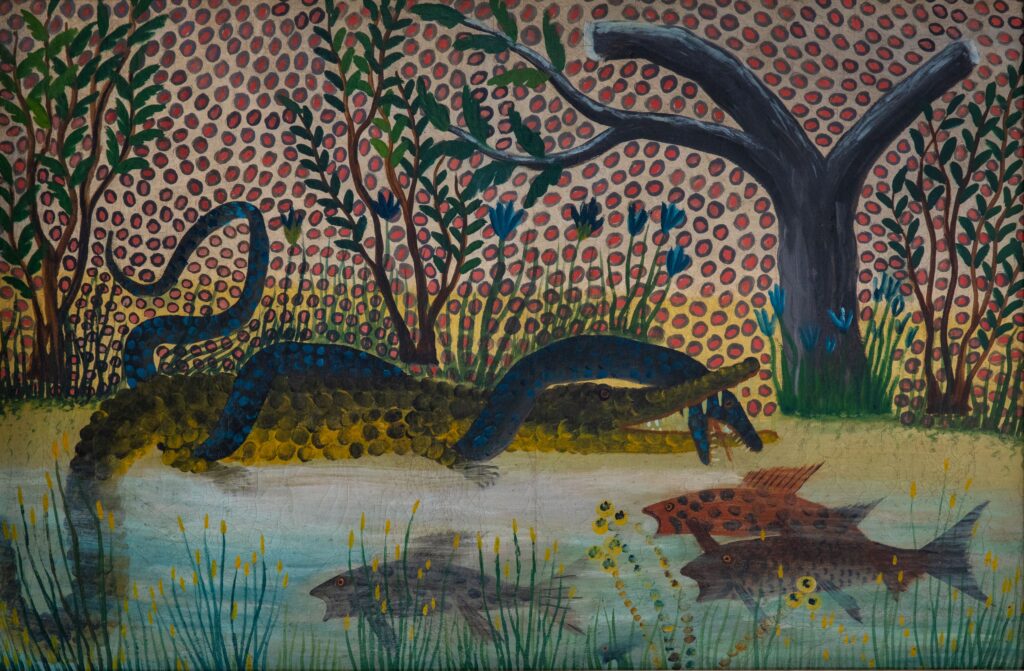
Enough emphasis cannot be stated on how completing the survey of HUM’s modern African art collection provided a strong foundation to push the project in different directions. From the completion of an exhibition catalogue to the creation of an educator guide, it all started with the completion of the survey. For that, I must sincerely thank Elizabeth Robson who worked tirelessly alongside me to complete the survey, and HUM’s curator of collection, Kenlontae Turner, and registrar, Amanda Wells who offered overwhelming support in compiling a list of the known locations of many of the modern African artworks and helping to locate many others within HUM’s collection.
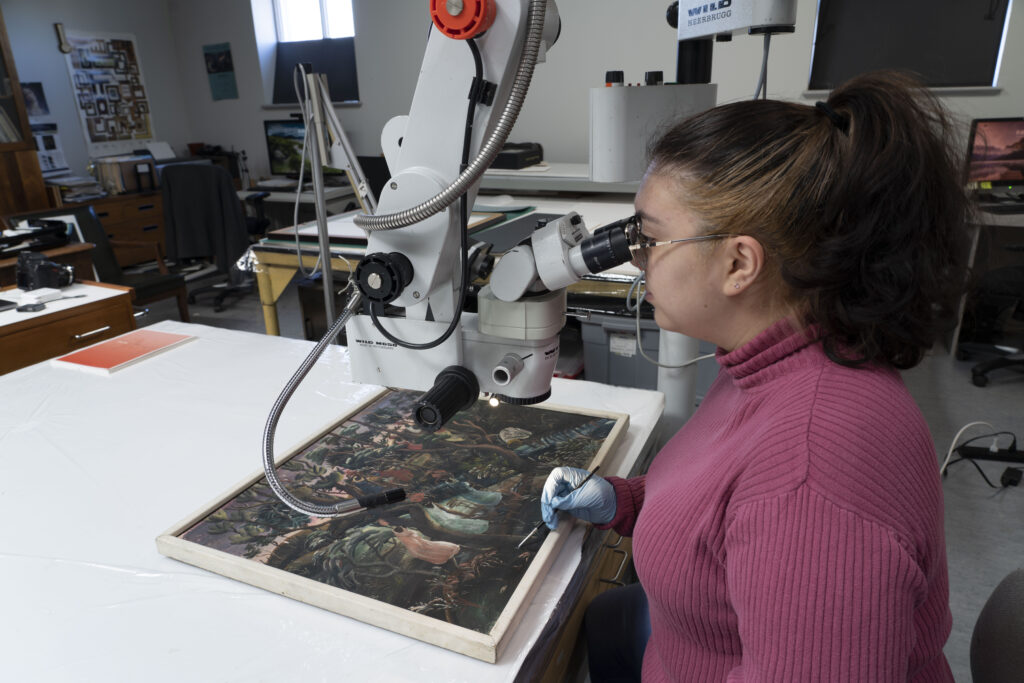
The completion of the survey allowed me to begin my research to conceptualize two exhibitions, Sankofa: Constructing Modern Africa Art and I Am Copying Nobody: The Art and Political Cartoons of Akinola Lasekan, which was on view at the Chrysler Museum of Art from April to August 2024. The survey provided a roadmap to avoid choosing pieces that were unfortunately not in the best condition. Due to time constraints, priority was given to artworks that did not need as much conservation work. Despite this, some pieces were high priority for conservation treatment, such as The Abandoned Hut by Ugandan artist Mordecai Buluma. You can read about the treatment of this piece undertaken by Angie Lopez, the current Andrew W. Mellon Conservation here. Angie conducted hours of work that went into consolidating loose paint, inpainting, and revarnishing the painting. Angie’s work showcases another successful part of this project, the conservation of select works from HUM’s modern African art collection. Without Angie, the artworks within the two exhibitions would not have looked as amazing as they did.
Takeaways
For those who might be interested in conducting a similar program, my first takeaway and advice would be to pair a conservation and curatorial fellow throughout the duration of the program. This pairing gave me valuable knowledge and insight into conservation. It also provided a humbling experience. It is easy to miss the behind-the-scenes work that goes into planning and executing an exhibition, especially when it comes to conserving artworks. Having that one on one with a conservator allowed me to check my own expectations and needs for the exhibitions, especially when considering the time and effort needed to conserve one piece, let alone two exhibitions.
My final takeaway is a three-year fellowship dedicated to the diversification of museum curation and conservation needs to employ younger individuals, specifically high schoolers and undergraduates. A fellowship, like the one that I have been a part of, that requires a master’s degree, or a Ph.D. cannot truly diversify these fields because there is already a small group of people who identify with a racial minority group with advanced degrees in museum studies, art, art history, etc. If diversification is the goal, museums need to employ a larger group of younger fellows who are unsure if they want a career in museum curation or conservation. Of course, when thinking about the broader issue of the lack of diversity within museum curation and conservation, a larger discussion needs to be had on the price of education compared to starting wages within these fields, the elitism museums uphold by requiring a master’s degree and/or a Ph.D for curatorial and conservation positions, and how museums often do not provide a safe and healthy space for people of color to thrive, resulting in them leaving these fields. If the museum field gave more time and effort to solve these systemic issues, then a true diversification of museum curation and conservation might be obtainable.
Explore other articles like this
Art Spotlight: The Abandoned Hut by Mordecai Buluma
In this blog post Angie and Tashae discuss the symbolism behind The Abandoned Hut by Mordecai Buluma as well as the conservation treatment used to prepare it for exhibition.
Opening of I am Copying Nobody the Art and Political Cartoons of Akinola Lasekan
On April 13, 2024, I Am Copying Nobody: The Art and Political Cartoons of Akinola Lasekan opened at the Chrysler Museum of Art. Here are some highlights from the exhibition.
Biggers and Boghossian: A Diasporic Voyage to Cultural Consciousness
This is an excerpt from the essay Biggers and Boghossian: A Diasporic Voyage to Cultural Consciousness that will be featured in an upcoming exhibition catalogue, available April 2024.
